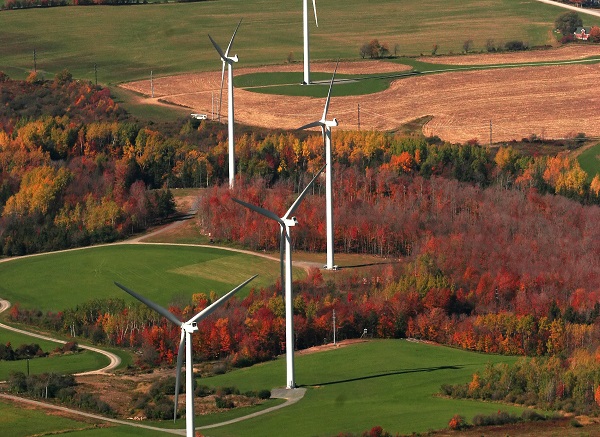Connecticut is going to get a whole lot more renewable energy, and in line with the falling costs for wind and solar that we’ve been detailing lately, it’s not going to have to pay a whole lot for it.
Gov. Dannel P. Malloy announced that developers of a 250-megawatt wind power plant in Maine and a 20-MW solar photovoltaic plant in Connecticut itself had signed long-term deals to provide electricity to Connecticut Light & Power and United Illuminating. Malloy said the price for the energy will average less than 8 cents per kilowatt-hour. For the Northeast U.S., that’s quite competitive with conventional power, even before you add in the cost benefits of not generating carbon dioxide and other harmful emissions.

“These projects bring real benefits – cleaner power with no air emissions and improved reliability by diversifying our energy portfolio – all at a cost comparable to electricity generated from conventional power plants,” Malloy said in a statement. “This is the most significant step Connecticut has ever taken to harness the power of clean energy and this announcement is truly a historic moment in Connecticut’s energy history.”
The projects will benefit from tax breaks given to renewable energy projects, but of course fossil fuels have benefited from a long history of government support.
The state gave these details on the two projects, which are expected to be operational by 2017:
- Number Nine Wind Farm, a 250 MW land-based wind farm to be located in Aroostook County, Maine. EDP Renewables North America LLC, an international leader in large-scale wind installations, is the project developer.
- Fusion Solar Center, a 20 MW AC solar photovoltaic system which will be located in Sprague and Lisbon, CT on land primarily owned by the Connecticut-based Fusion Paperboard Company. The project developer is HelioSage Energy, known nationally for its solar expertise.
Connecticut is upping the amount of renewable energy going being used in the sate through a clean energy procurement process in which projects compete to offer the best price along with viability and reliability. The two projects just announced were selected from among 47 that responded to a request for proposal put out earlier this year.
The state said the two projects selected “will provide 3.5 percent of Connecticut’s total energy load, which represents almost one-fifth of the RPS goal (20% by 2020).”